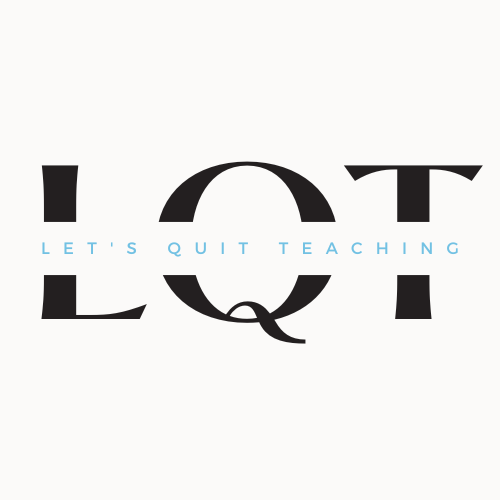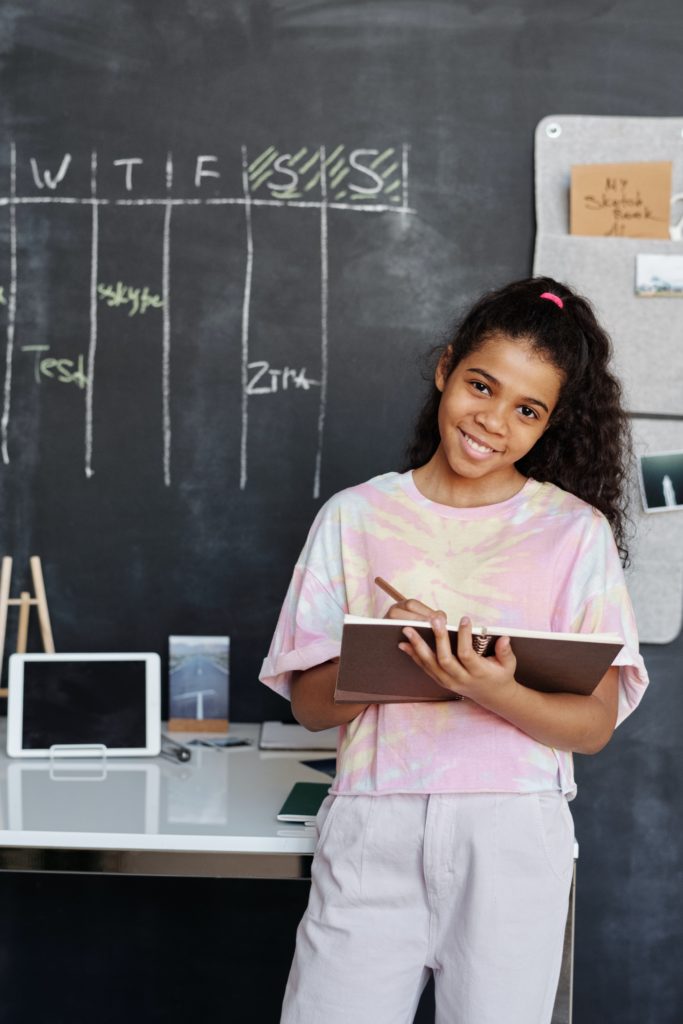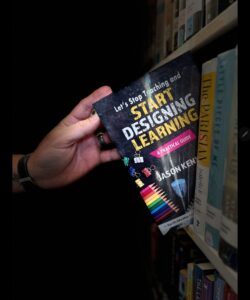When we drill down standards to what students’ learning expectations are in the classroom, we are really talking about them learning how to “do” something. Learning to do whatever skill the standards are asking of them, leads to knowledge and learning, so when we want to improve student engagement in the classroom, the first place we really need to look is the learning task. The task is basically what are we asking students to produce for us that has qualities observable by all that the learning of the lesson has occurred? Sounds pretty simple, but this is most often the place we can find the most effective and immediate improvement in the learning we offer students in the classroom. Here are 5 ways you can ensure that not only learning is taking place, but the learning is engaging as well, all based on the TASK.
- Follow the Goldilocks Principle: Examine your task through the lens of student rigor. Is what you are asking them to do too easy? Is it too difficult? Tasks need to be challenging enough to motivate students to want to be successful, but not so easily conquered that they are bored. Finding that “just right” level of rigor can increase engagement and motivation for students and also stave off behavior issues that often arise when students become bored or shut down in class because they see the work they are being asked to do is either too simple or too complex. Students, and adults, are motivated by meaningful success. We have to build in opportunities for these small meaningful successes to happen in student learning, so they can feel that surge in motivation to move forward and on to the next challenge.
- Provide a Success Criteria: Students engage when they feel they have been given responsibility and ownership is what is going on. There is no better way to do that than with a Success Criteria that is supported with tools to escape and pathways to accelerate. A quality Success Criteria allows students to “see” tangible, observable characteristics in their work on the task. They can self-assess where they are in their learning for the lesson and move themselves forward in their learning. This also requires teachers to provide tools to escape misunderstanding for students in lower levels. Students access these tools (anchor charts, student worked examples, student videos, graphic organizers, etc) and work through the misunderstanding on their own, with the teacher on stand-by. For those at level 3, meeting the standard, they have a way to move beyond to deepen or accelerate their learning for this task with a pathway designed by the teacher as well. This way, the teacher is free to small group with those needing intense attention, while the rest of the class is engaged and owns their learning.
- Add Choices: In addition to the qualities above, choice is often a design quality that can be easily built into many learning tasks. If the lesson has a learning target, or metaphorical finish line, we can allow for students to choose how they eventually get there as long as the qualities are present in their work that shows both them and the teacher that the learning was accomplished. This allows teachers to design scaffolded tasks for students at all levels so that everyone is arriving together at the same learning goal for the day, just in different ways. For example, my high-level readers may have 6 texts to choose from to gain information about the learning topic and have 5 choices in presenting this information as a product. My lowest level readers are small grouping with me reading 1 Lexile appropriate text while using sentence stems and graphic organizers to collect our learning. While learners in the middle have differing choices of texts and products to meet their needs as well. All are meeting the high expectation of today’s learning goal, but equity has been implanted and students again have another way of taking ownership and remaining engaged in their learning for the day.
- Let Students Collaborate: Nothing sends chills up my spine more than the deadly silence of a compliance-driven classroom. I would much rather be in a noisy, learning-filled classroom than one with rows of desks with silent workers. We owe it to our students, and to ourselves, to design collaboration into the learning. It requires setting expectations, even better co-creating them with students, in order to maintain focus where it needs to be on learning. But, allowing students to interact, discuss, share ideas, critically think, challenge each other are all the soft skills many future employers are looking for in the next generation of workers. We, as adults, do not like learning alone most of the time. Why subject students to isolation and compliance when sharing and collaboration can get so much more accomplished?
- Insert EdTech with a Purpose: With so many new and exciting advancement in technology lately, it is both tempting and overwhelming to dive into EdTech headfirst and go crazy. Don’t get me wrong. I LOVE EdTech and all of the possibilities it brings with it. The dangers for the learning in the classroom it brings can be overlooked. First, if you choose to incorporate EdTech into the learning, it needs to be for a learning purpose. EdTech for EdTech’s sake alone, just like engagement for engagement’s sake alone, leaves learning out of the equation, and learning is what we are chasing after all. So, choose the tech to match the purpose inside of the learning of the lesson. Basically, there’s 3 main uses for EdTech in the learning process: for research, for creation, and for collaboration. What you choose depends on the outcome you are seeking for the learning. Choose EdTech tools carefully in your design, making them instruments of learning, not just bells and whistles of engagement. On the opposite end of the spectrum, EdTech can be used just as easily to disengage students in learning by making devices nothing more than digital worksheets. The point is, use EdTech with a design in purpose to promote and demonstrate learning.
These 5 suggestions are qualities we can all incorporate into our learning designs across all grades and content areas. If you are interested in any specifics or would like to know more, please feel free to reach out at letsquitteaching@gmail.com


